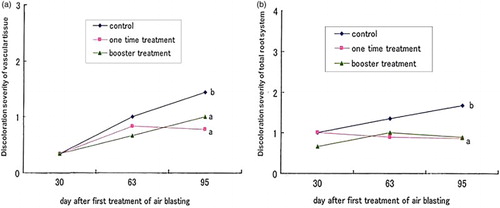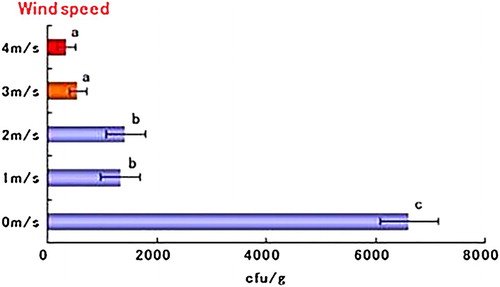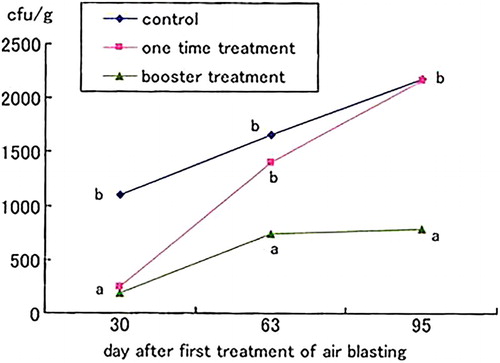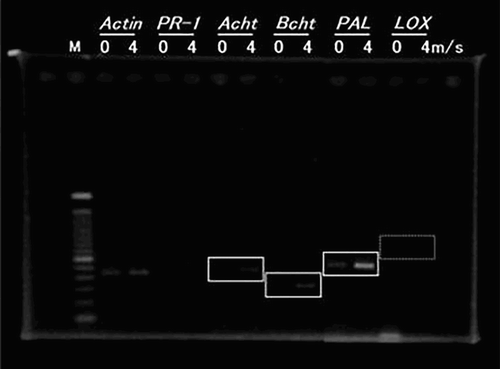Figures & data
Table 1. List of primers used in RT-PCR analysis.
Figure 1. Effect of air blasting for one time and booster treatments on the discoloration severity of vascular tissue (a) and discoloration severity of total root system (b) of FORL in tomato. Assay was performed at 30, 63 and 95 days after first treatment of air blasting. Different letters indicate significant different according to Fisher's LSD test at 5%.

Table 2. Effect of air blasting with different wind speeds (0–4 m/s) on vascular discoloration and discoloration severity of total root system due to Fusarium crown and root rot caused by FORL.
Table 3. Effect of air blasting with long treatments (30–240 min) on vascular discoloration and discoloration severity of total root system due to Fusarium crown and root rot caused by FORL.
Figure 2. Effect of air blasting with different wind speeds (0–4 m/s) on population density of FORL in tomato root. Assay was performed at 25 days after inoculation of the pathogen. Bars labeled with the same letters are not significantly different according to Fisher's LSD test at 5%. Horizontal bars indicate the standard error.

Figure 3. Effect of air blasting with long-time treatments (30–240 m/s) on population density of FORL in tomato root. Assay was performed at 25 days after inoculation of the pathogen. Bars labeled with the same letters are not significantly different according to Fisher's LSD test at 5%. Horizontal bars indicate the standard error.

Figure 4. Effect of air blasting for one time and booster treatments on population density of FORL in tomato. Assay was performed at 30, 63 and 95 days after first treatment of air blasting. Different letters indicate significant different according to Fisher's LSD test at 5%.

Table 4. Effect of root extracts from tomato treated with air blasting with different speeds (0–4 m/s) on production of budding cell of FORL.
Table 5. Effect of root extracts from tomato treated with air blasting with long treatments (0–240 min) on production of budding cell of FORL.
Figure 5. PR genes expression on tomato plants treated with air blasting. Host genes include PR-1, acidic and basic-chitinase (Acht and Bcht), phenylalanine ammonia-lyase (PAL) and lipoxygenase (LOX). Actin gene (house-keeping gene) was used as control. Digits indicate the wind speed: 0 = 0 m/s, 4 = 4 m/s.

